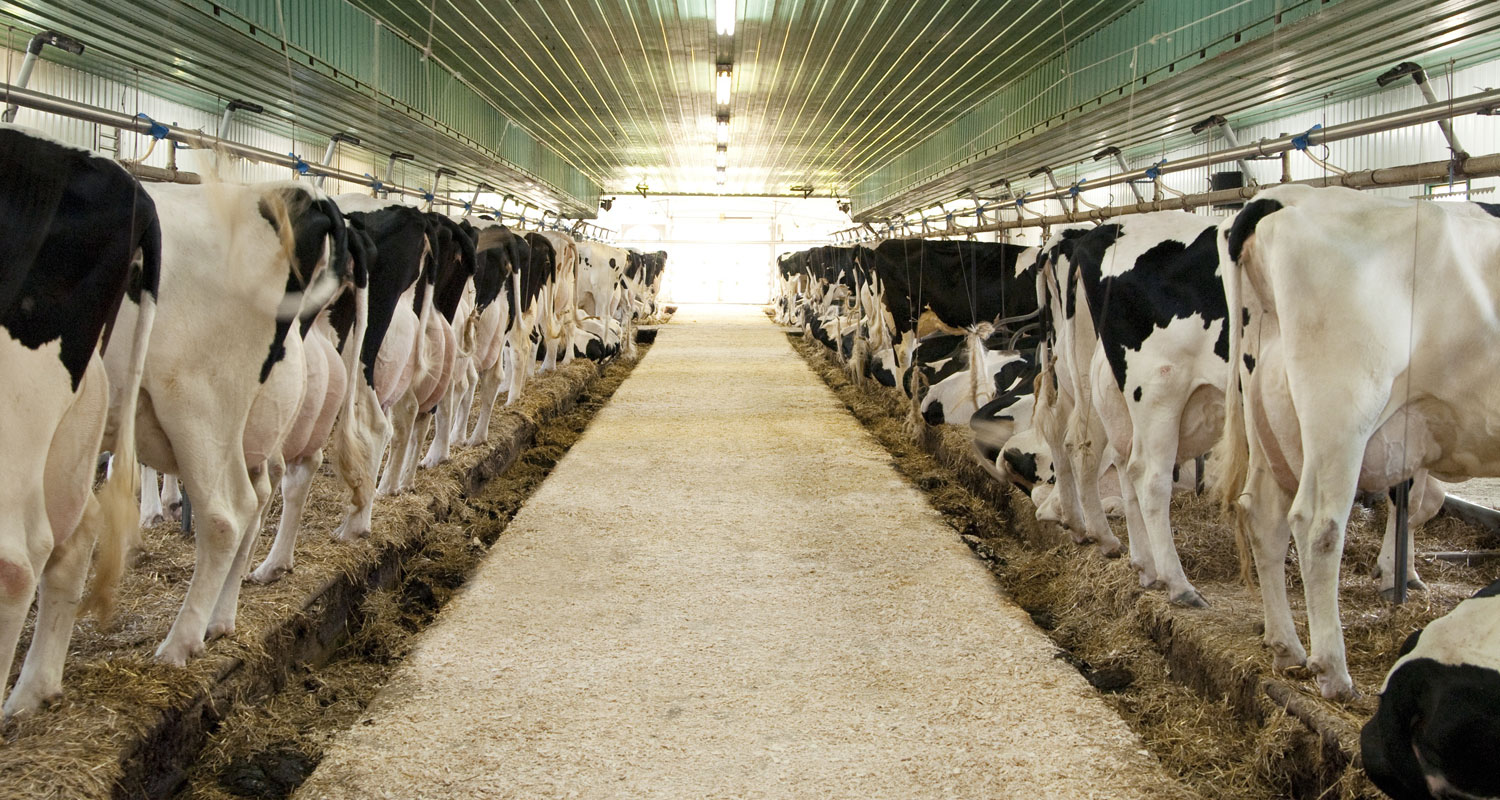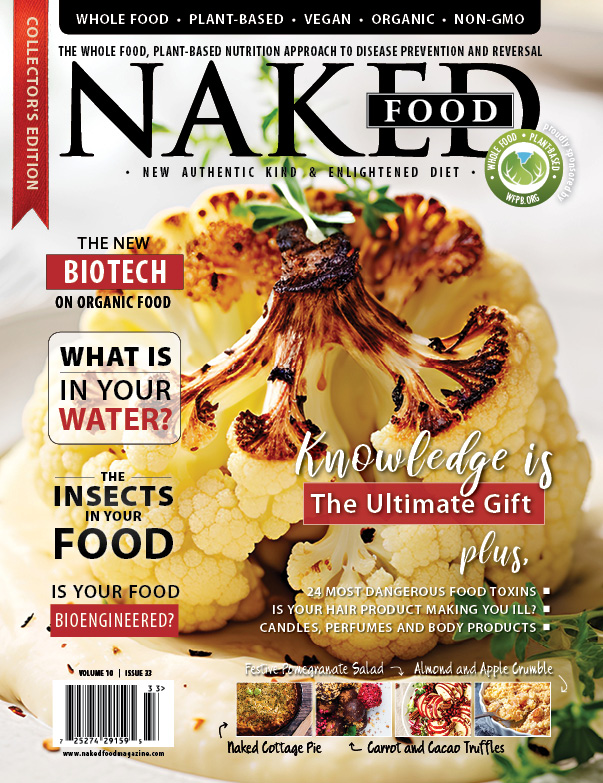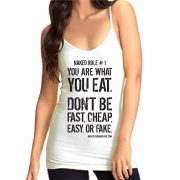Much has been made lately of organic meat. But is it really "better" for you? The answer is a resounding "No!"
So-called organic meats are sold as a means for people to reduce their exposure to hormones and chemical toxins. The United States Department of Agriculture (USDA) states that animals raised on an organic operation must be fed organic feed and given access to the outdoors. They are given no antibiotics or growth hormones. Organic crops are raised without using most conventional pesticides and using no petroleum-based or sewage-sludge-based fertilizers.
However, while concentrations of some contaminants may be decreased, switching to organic meat does nothing to decrease the risk for the diseases that remain the biggest killers of Americans. Cholesterol, fat (especially saturated fat), and animal protein are the major culprits in meat that are associated with higher risks of heart disease, diabetes, and some cancers. They are also associated with the development of the many risk factors that lead to these diseases, including obesity and hypertension.
Animal products, however they are produced, increase the risk of many diseases.
Cholesterol Found in All Animal Products
The liver naturally produces all the cholesterol the human body requires, so we never need outside sources. All foods from animals—dairy products, meat (no matter what kind), fish, eggs—contain cholesterol, whereas plants have essentially none.
Cholesterol is a troublemaker. First, it adds to your own cholesterol, which raises the level of cholesterol in your blood.1 Everyone is different, but generally, every 100 milligrams of cholesterol in your daily diet adds about five points to your total cholesterol level. What does that look like on your plate? A four-ounce serving of beef or chicken, with or without the skin, contains about 100 milligrams of cholesterol.
Even the leanest chicken cuts have cholesterol because it lurks in the muscle tissue. Overall, chicken contains only slightly less fat than beef does—23 percent fat as opposed to 29 percent fat. And much of it is artery-clogging saturated fat, the worst type.
With respect to cholesterol content, fish vary. A four-ounce serving of tuna has 40 milligrams of cholesterol, while haddock or rainbow trout has more than 80 milligrams. None are even close to being cholesterol free and some are extremely high—shellfish like shrimp, lobster, and crayfish, for example. Ounce for ounce, shrimp have about double the cholesterol of beef.
Cholesterol in foods can be a health risk even for those without high blood cholesterol levels of their own. Numerous studies, such as the one conducted at the Western Electric Co. near Chicago,2 have shown that the more cholesterol you ingest, the higher your risk of artery blockages, regardless of blood cholesterol level. Less cholesterol on the plate means less risk for heart problems—as much as 50 percent less—whether or not it lowers blood cholesterol levels.
Cholesterol-containing foods should be avoided completely. An international conference of leading heart researchers, including Michael DeBakey, M.D., Dean Ornish, M.D., and many others concluded that “the optimal intake of cholesterol in the adult is probably zero,”3 reiterating the same conclusion reached by Harvard researchers.4 A diet containing red meat, as well as any chicken, turkey, fish, beef, eggs, or dairy products at all, is not a zero-cholesterol diet.
Saturated Fat
Saturated fat is even worse than cholesterol in foods—and its content is not affected by organic status. Saturated fat is particularly harmful because it stimulates the liver to manufacture more cholesterol. The term “saturated” simply means that the fat molecule is completely covered with hydrogen atoms. Saturated fats are easy to recognize since they are solid at room temperature, while unsaturated fats are liquids. Fat is marbled throughout all meat and poultry, so the only way to avoid it is to avoid meat altogether. Even chicken and turkey breasts cooked without the skin have significant amounts of saturated fat; about 20 percent of the calories still come from the animal fat lurking in the muscle. And about 15 percent to 30 percent of the fat in fish is saturated fat. A study published in the Australia and New Zealand Journal of Medicine showed that people who adopt a vegetarian diet naturally reduce their saturated fat intake by 26 percent and achieve a significant drop in cholesterol levels in just six weeks.
While organic standards may help to improve some aspects of health, it cannot help prevent obesity, high blood pressure, diabetes, heart disease, and many forms of cancer, nor will it cure the environmental contamination and resulting health hazards plaguing the production and consumption of animal foods.
Osteoporosis
Animal protein from any source is bad for bones. Studies have shown that animal proteins encourage increased calcium excretion and risk of fracture and osteoporosis.6-8 Many years ago, animal protein was thought to be advantageous, but it is now believed to be part of the problem, not part of the solution. Plant protein—in beans, grains, and vegetables—does not appear to have this negative effect on bones.9
Impaired Kidney Function
Protein releases nitrogen into the blood as it is digested and metabolized. When too much protein is consumed, this places a strain on the kidneys, which must expel the waste through the urine. High-protein diets are associated with reduced kidney function. Over time, individuals who consume very large amounts of protein, particularly animal protein, risk permanent loss of kidney function. Harvard researchers reported that high-protein diets were associated with a significant decline in kidney function, based on observations in 1,624 women participating in the Nurses’ Health Study. The good news is that the damage was found only in those who already had reduced kidney function at the study’s outset. The bad news is that as many as one in four adults in the United States may already have reduced kidney function, suggesting that most people who have renal problems are unaware of that fact and do not realize that high-protein diets may put them at risk for further deterioration. The kidney-damaging effect was seen only with animal protein. Plant protein had no harmful effect.10
Heart Disease
Four major risk factors for heart disease are high cholesterol, high blood pressure, smoking, and a sedentary lifestyle. None of these are alleviated by switching to organic meat.
Diet can be an effective treatment for heart disease. However, the current national guidelines that recommend lean cuts of meat and fish are not enough. A study in the New England Journal of Medicine showed that the effect of the National Cholesterol Education Program Step II Diet on cholesterol, which includes lean cuts of meat and fish, is ineffective for treating heart disease. Even among patients with good adherence, this diet has been shown to reduce LDL by only about 5 percent.11 For a patient with a cholesterol level of 250 mg/dl (6.5 mmol/L), for example, a 5 percent drop leads only to about 235 mg/dl (6.1 mmol/L), which is still far too high for safety. Not only does such a diet not lower cholesterol levels effectively, but it does not reverse arterial blockages and, in fact, allows blockages to gradually worsen for most patients. Sadly, studies such as this, which have investigated what are considered “the gold standard” in dietary treatment, have led many people to believe that diet alone cannot be an effective treatment for the prevention or reversal of heart disease—this couldn’t be farther from the truth.
Plant-based diets have consistently been proven to be the most effective in preventing and reversing heart disease. Vegetarians tend to be leaner, have lower cholesterol levels, lower blood pressure, and less heart disease. And a clinical study using a low-fat vegetarian diet was shown to actually reverse the disease by shrinking coronary artery blockages12—something “prudent” low-fat diets that include animal products have not been able to demonstrate.
Cancer
Contaminants found in animal products can lead to increases in cancer. However, many of the known carcinogens found in meat would not be decreased by switching to organic meat. The contribution of meat to cancer risk appears to stem from its nutrient make-up, high in saturated fat and devoid of fiber, rather than to the conditions of production. Meats, organic or not, that are cooked at high temperatures tend to contain sizable quantities of heterocyclic amines, carcinogens that form as meat cooks. A 2005 amines study showed that nearly 80 percent of studies in humans found a connection between cancer incidence and consumption of well-done meat.13
Foodborne Illnesses
Foodborne illnesses are another serious concern stemming from consumption of meat, especially poultry. Microbial contaminants live in animals’ intestinal tracts and can easily turn up on any sort of meat product. From 1993 to 1997, 2,751 outbreaks, involving 86,058 cases of food poisoning, were reported to the Centers for Disease Control and Prevention (CDC). Bacterial pathogens caused 75 percent of the outbreaks in 86 percent of the cases.14
The most common foodborne infections are those caused by campylobacter (associated with poultry products), salmonella (beef, poultry, milk, and eggs), and E. coli 0157:H7 (ground beef). Other foodborne pathogens include listeria (dairy products) and vibrio (shellfish). Raw foods of animal origin are the most likely to be contaminated, such as raw meat and poultry, raw eggs, unpasteurized milk, and raw shellfish.15
About 40,000 cases of salmonellosis are reported to the CDC annually, and about 600 deaths are associated with these cases. The CDC estimates that the actual number of infections may be 30 times more because many milder cases are not diagnosed or reported.16 From 1990 to 1992, the Food Safety and Inspection Service (FSIS) found salmonella in 25 percent of broilers analyzed. Also studied by FSIS were 25-gram uncooked samples of beef (1.4 percent positive for salmonella), pork (4.8 percent), chicken (15.7 percent), and turkey (8.5 percent).17 These bacteria-infected samples were taken from products sold to consumers.
Campylobacter is the second leading bacterial cause of diarrheal illness in the United States, according to the CDC. Campylobacteriosis is estimated to affect more than 1 million people every year and causes approximately 100 deaths.18 These organisms readily colonize in the avian intestinal tract but generally cause no illness in the bird. This means that infected birds are unlikely to be detected using the current methods of inspection in the slaughterhouse.
Microbial contamination of meat and poultry is a big problem, and it’s a huge concern for people consuming any animal products at all. With contaminated products in kitchens and restaurants, cross-contamination and contagion will be increasing problems.
Fish: Toxic Chemical Exposure
The USDA has not set any organic standards for fish and seafood, so the current problems with contaminants in fish may very well still exist in any fish product that is called organic.
Fish absorb contaminants as the water around them passes over their gills. Many of these chemicals do not break down in the environment, but dissolve easily in oils and can accumulate in the fatty tissues of the fish. Chemicals, such as polychlorinated biphenyls (PCBs), have been linked to various ailments in the children of women who consumed fish contaminated with PCBs during pregnancy. These include low birth weight19 and negative effects on neurological and cognitive development.20 PCBs were originally used as electrical insulators and hydraulic fluids before being banned in the U.S. in 1979, but their impact lives on. According to the National Research Council, PCBs are found in every site where fish have been tested. Indeed, fish is the most significant source of both PCBs and mercury for humans.21
Mercury, which causes neurological development problems and can cross the placenta of pregnant women, is another problem with eating fish. Mercury enters the environment naturally and through pollution from industries. Nearly all fish contain methyl mercury, but older, larger fish that feed on other fish, such as shark or swordfish, accumulate extremely high amounts of methyl mercury. These fish pose the largest threat to people who eat them on a regular basis. In January 2001, the Food and Drug Administration issued a warning that, because of astronomically high levels of mercury, pregnant women should not eat four types of seafood—swordfish, shark, king mackerel, and tilefish. These four fish exceed the safety standard of containing an average of 1 part per million of mercury. Scientific studies imply that even lower, more regular doses of mercury consumption may result in subtle neurological deficiencies in infants, such as lowered IQ, abnormal muscle tone, and loss of motor function.22
Also noteworthy are DDT and DDE, banned pesticides that are known to be extremely toxic and that still reside in the environment. Studies have shown a direct relationship between consumption of fish and blood levels of PCBs, DDT, and DDE.23-25
A Diet for all the Right Reasons
For those interested in promoting a healthy diet, it is important to teach and understand the many factors that play into health and disease and to adopt practices that address health as a whole. While organic standards may help to improve some aspects of health, it cannot help prevent obesity, high blood pressure, diabetes, heart disease, and many forms of cancer, nor will it cure the environmental contamination and resulting health hazards plaguing the production and consumption of animal foods. A plant-based diet that is naturally low in carcinogens, pathogens, and disease-causing fat and cholesterol is the best medicine for promoting a healthy life.
References
1. Lichtenstein AH, Ausman LM, Carrasco W, Jenner JL, Ordovas JM, Schaefer EJ. Hypercholesterolemic effect of dietary cholesterol in diets enriched in polyunsaturated and saturated fat. Dietary cholesterol, fat saturation, and plasma lipids. Arterioscler Thromb. 1994;14(1):168-175.
2. Shekelle RB, Stamler J. Dietary cholesterol and ischaemic heart disease. Lancet. 1989;1(8648):1177-1179.
3. Moncada S, Martin JF, Higgs A. Symposium on regression of atherosclerosis. Eur J Clin Invest. 1993;23(7):385-398.
4. Willett W, Sacks FM. Chewing the fat—how much and what kind? New Engl J Med. 1991;324(2):121-123.
5. Masarei JR, Rouse IL, Lynch WJ, Robertson K, Vandongen R, Beilin LJ. Vegetarian diet, lipids and cardiovascular risk. Aust NZ J Med. 1984;14:400-404.
6. Feskanich D, Willett WC, Stampfer MJ, Colditz GA. Protein consumption and bone fractures in women. Am J Epidemiol. 1996;143:472-479.
7. Abelow BJ, Holford TR, Insogna KL. Cross-cultural association between dietary animal protein and hip fracture: a hypothesis. Calcif Tissue Int. 1992;50:14-18.
8. Sellmeyer DE, Stone KL, Sebastian A, Cummings SR. A high ratio of dietary animal to vegetable protein increases the rate of bone loss and the risk of fracture in postmenopausal women. Am J Clin Nutr. 2001;73(1):118-122.
9. Remer T, Manz F. Estimation of the renal net acid excretion by adults consuming diets containing variable amounts of protein. Am J Clin Nutr. 1994;59:1356-1361.
10. Knight EL, Stampfer MJ, Hankinson SE, Spiegelman D, Curhan GC. The impact of protein intake on renal function decline in women with normal renal function or mild renal insufficiency. Ann Intern Med. 2003;138(6):460-467.
11. Hunninghake DB, Stein EA, Dujovne CA. The efficacy of intensive dietary therapy alone or combined with lovastatin in outpatients with hypercholesterolemia. N Engl J Med. 1993;328:1213-1219.
12. Ornish D, Brown SE, Scherwitz LW, et al. Can lifestyle changes reverse coronary heart disease? Lancet. 1990;336:129-133.
13. Knize MG, Felton JS. Formation and human risk of carcinogenic heterocyclic amines formed from natural precursors in meat. Nutr Rev. 2005;63(5):158-165.
14. Olsen SJ, MacKinnon LC, Goulding JS, Bean NH, Slutsker L. Surveillance for foodborne-disease outbreaks—United States, 1993-1997. MMWR CDC Surveill Summ. 2000;49(1):1-62.
15. CDC Division of Bacterial and Mycotic Diseases. Disease information: foodborne illness. Available at: http://www.cdc.gov/ncidod/dbmd/diseaseinfo/foodborneinfections_g.htm. Accessed November 2006.
16. CDC Division of Bacterial and Mycotic Diseases. Disease information: salmonellosis. Available at: http://www.cdc.gov/ncidod/dbmd/diseaseinfo/salmonellosis_g.htm.Accessed November 2006.
17. Food Safety and Inspection Service. Progress report on salmonella testing of raw meat and poultry products, 1998-2002. Available at: http://www.fsis.usda.gov/OPHS/haccp/salm5year.pdf. Accessed November 2006.
18. CDC Division of Bacterial and Mycotic Diseases. Disease information: campylobacter infections. Available at: http://www.cdc.gov/ncidod/dbmd/diseaseinfo/campylobacter_g.htm. Accessed November 2006.
19. Hertz-Picciotto I, Charles MJ, James RA, Keller JA, Willman E, Teplin S. In utero polychlorinated biphenyl exposures in relation to fetal and early childhood growth. Epidemiology. 2005;16(5):648-656.
20. Boersma ER, Lanting CI. Environmental exposure to polychlorinated biphenyls (PCBs) and dioxins. Consequences for longterm neurological and cognitive development of the child lactation. Adv Exp Med Biol. 2000;478:271-287.
21. Gillette, B. Mercury Rising. E, The Environmental Magazine. July/August 1998.
22. Myers GJ, Davidson PW. Does methylmercury have a role in causing developmental disabilities in children? Environ Health Perspect. 2000;108 Suppl 3:413-420.
23. Asplund L, Svensson B, Nilsson A, et al. Polychlorinated biphenyls, 1,1,1,-trichloro-2,2-bis(p-chlorophenyl)ethane (p,p’-DDT) and 1,1-dichloro-2,2-bis(p-chlorophenyl)-ethylene (p,p’-DDE) in human plasma related to fish consumption. Arch Environ Health. 1994; 49:477-486.
24. Laden F, Neas LM, Spiegelman D, et al. Predictors of plasma concentrations of DDE and PCBs in a group of U.S. women. Environ Health Perspect. 1999;107(1):75-81.
25. Sjodin A, Hagmar L, Klasson-Wehler E, Bjork J, Bergman A. Influence of the consumption of fatty Baltic Sea fish on plasma levels of halogenated environmental contaminants in Latvian and Swedish men. Environ Health Perspect. 2000;108(11):1035-1041.























